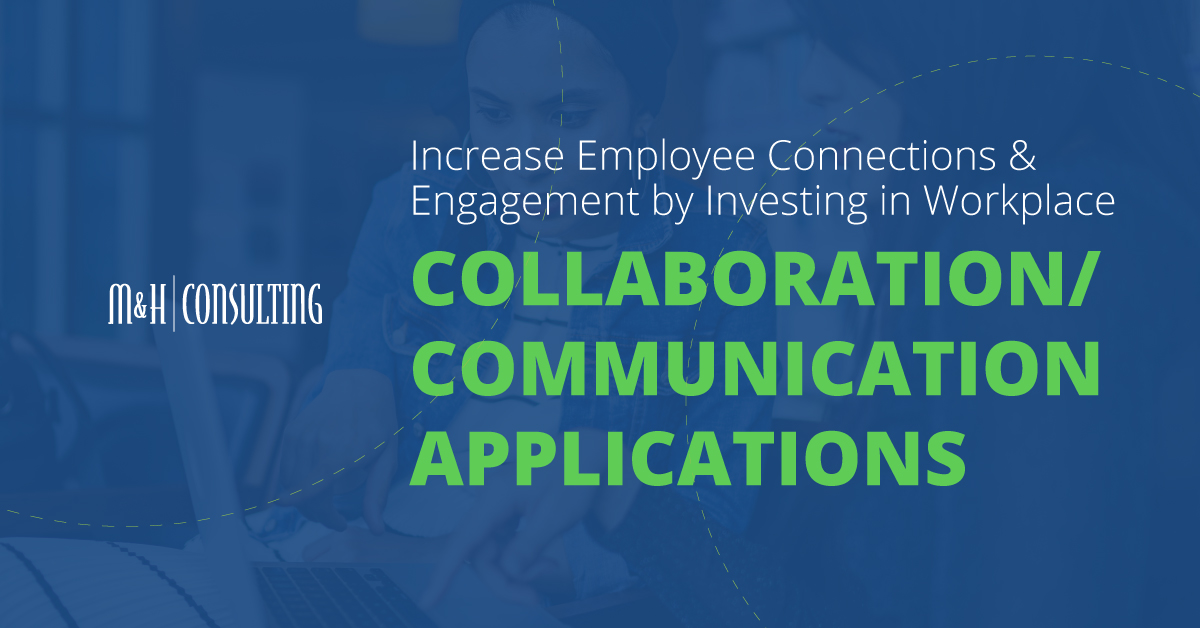As we enter a post-COVID world, it’s becoming increasingly clear that we’re also entering the world of hybrid workforces. More and more companies, from small businesses to large corporations, are either allowing their employees to work from home full-time or at least establish a partial, hybrid work schedule.
We have spoken in the past about the future of the business as a hybrid one, with employees finding that they can achieve incredible results performing their daily tasks from the comfort of their own home. However, today let’s focus on how you can maintain engaging employee connections, whether in-office or remote, with the use of best technology practices.

More Meetings ≠ Employee Engagement
Before we get started on our best technology practices, it’s important to note that increasing meeting occurrences and/or length doesn’t necessarily increase employee engagement.
Gartner data shows that employees working remotely attend one or more meetings a day on average than they would in the office and that, “after close to a year of remote and hybrid workforce models, employees are tired of meetings.”
Okay, we’ve identified a few problems. But, we’re a technology support and consultation company that works on solutions. So here’s M&H Consulting’s…
3 Best Technology Practices To Increase Employee Connections & Engagement

1. Invest In Workplace Collaboration/Communication Applications
One of the most straightforward ways to increase workplace connections without adding more meetings to your schedule is to invest in a quality professional communication application. While email, text messaging, and voice calls are certainly time-tested communication solutions, they are not fully optimized for continuous remote workplace communications.
Many of these applications/platforms, such as the most prominent – Slack, feature outstanding organizational capabilities, such as organizing “chat rooms” into company-wide, team-based, and direct messaging segments. Slack also includes the ability to drag-and-drop attachments, pin important documents, send funny gifs to each other (I mean, who doesn’t love that?), and make company-wide announcements. The easy-to-use notification settings ensure that your employees never miss a beat.
2. Enhance Digital Employee Meet-Ups (Not Meetings)
Not everyone loves the idea of working from home. Some people need to see a friendly face every once in a while to increase their productivity through coworker engagement. Rather than increasing the amount of traditional digital meetings, be sure to schedule some exciting, interesting, and engaging digital team meet-ups.
These can be after-work employee happy hours, interesting professional development training, digital workplace-friendly games, or just simple quick meet-ups to say “hello” to one another. With the increasing capabilities of video conferencing software, it seems that managers and team leaders are only limited by their creativity.
3. Ensure That Your Employees’ Technologies Function Properly
Okay, so we can’t win the game if we aren’t even playing, right? When it comes to hybrid workforces and increasing overall employee engagement and connections, the proper technology is a must-have. You’ll want to ensure that you and your employees have the right technological tools to adequately communicate with each other on a daily basis, reliably.
The lack of properly functioning technology, such as updated laptops, high-end business-grade software, cloud data sharing, digital security measures, etc., can be a huge frustration for employees in and out of the office. By ensuring that your employees, wherever they are, have access to the best technical tools or highly responsive and friendly technical support, your teams will be able to solve problems on the fly, achieve their daily tasks, and communicate effectively with each other, increasing overall workplace satisfaction and employee connections.
Categorised in: Business Management, Business Transformation, digital, Digital Age, Innovation, Management, remote employees, remote work, Tech Tips, Transformation, workplace issues
